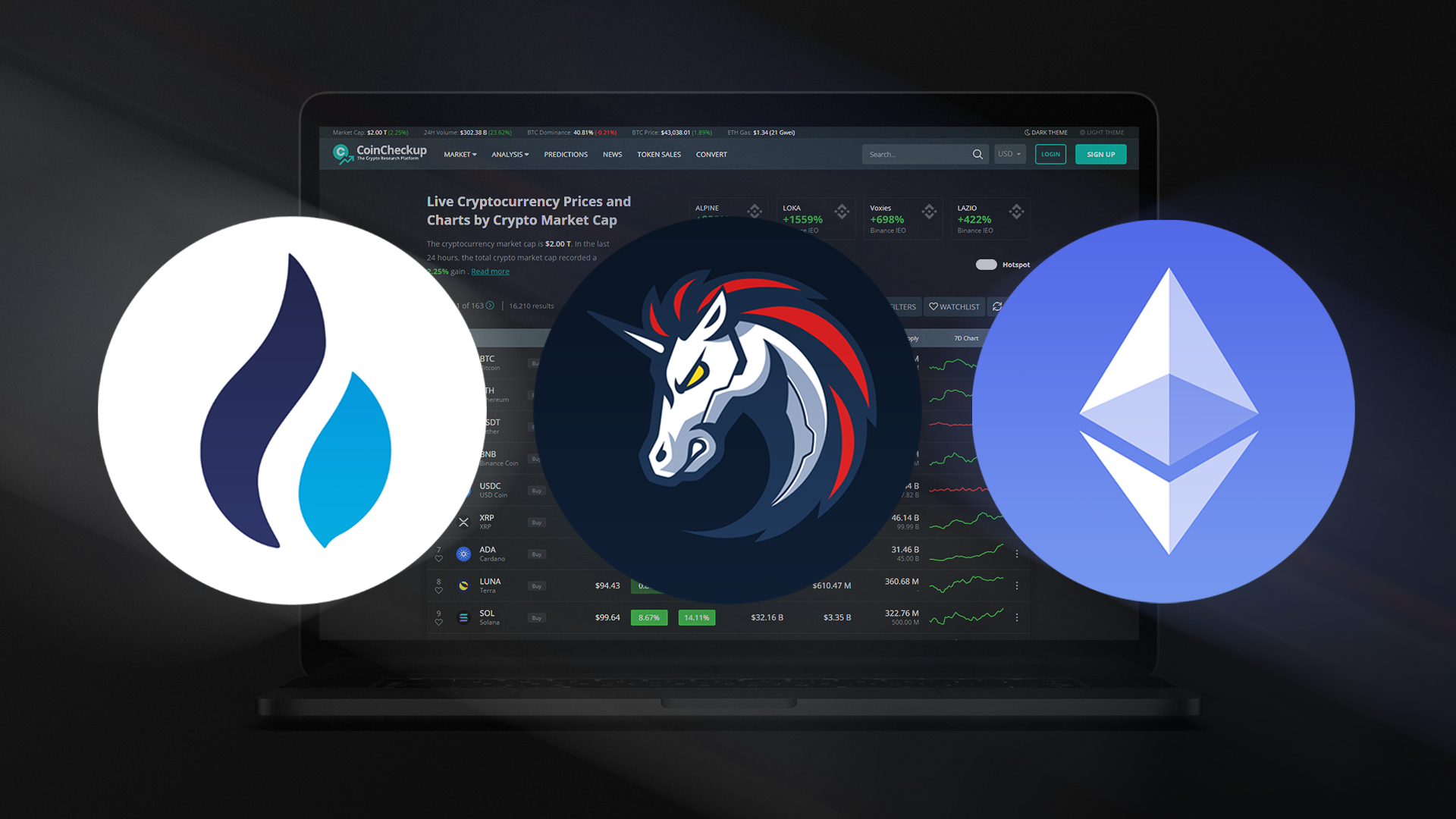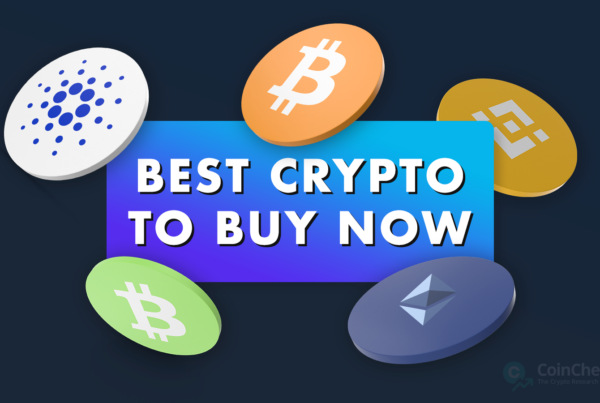
The cryptocurrency market has been moving in an upward trend for the second week in a row as the total cryptocurrency market capitalization has been increasing with roughly the same rate as the week before. Last week it climbed from $1.15 trillion to $1.21 trillion, while the week before that (August 1 to August 8) we have seen the valuation rise from $1.08 trillion to $1.15 trillion. The positive crypto market movements are fuelled by the global macroeconomic conditions (rising inflation) as well as the fact that the Ethereum Merge, arguably the biggest event in the cryptocurrency sphere this year, is right behind the corner. Even though the uptrend will likely continue throughout this week, we believe these few coins and tokens have the potential to outperform the market average.

3. Huobi Token (HT)
Huobi Token (HT) is the native token of the Seychelles-based Huobi cryptocurrency exchange. Huobi was founded in China in 2013 by a computer engineer named Leon Li. Since than Huobi has grown to become one of the biggest crypto exchanges, with customers and offices all around the world. HT was launched in January 2018 and initially offered its holders classic exchange token rewards, such as trading fee discounts and rebates. Later, exchange developers expanded the HT use cases by granting HT holders the ability to vote on new token listings and participate in exclusive Initial Exchange Offerings (IEOs). Originally HT was an Ethereum-based token but today the token also serves as the native asset of the HECO Chain blockchain platform, where it is needed to pay for transaction fees. Nevertheless, HT can also be staked or delegated to running validator nodes. HT has a capped supply of 500 million, but the Huobi exchange regularly burns HT using a part of its profits, which is gradually reducing the total available supply.
HT price jumps by more than 20% as rumours that founder Leon Li is looking to sell his majority stake in Huobi surface
According to Bloomberg’s unnamed sources Leon Li, the founder of Huobi Global, is actively seeking to sell his 60% stake in the exchange. Furthermore, he has reportedly already held preliminary discussions with the FTX crypto exchange as well as TRON founder Justin Sun. While Sun denied that any such acquisition talks have taken place in a public statement, the FTX CEO and representatives have remained silent and have nor denied nor confirmed their involvement. The FTX exchange, which is currently in the expansion phase as it has already purchased the Liquid and Bitvo cryptocurrency exchanges earlier this year, therefore seems like a more plausible buyer out of the two candidates. The HT markets reacted very positively to the news and HT price quickly jumped from $4.37 to $5.60 after Bloomberg article was published. At the time of writing, HT is changing hands at the price of $5.30 per token. The reason for the spike could be that Li is seeking to sell his 60% stake for more than $1 billion, which would put Huobi Global’s total valuation at up to $3 billion. In any case, it will be interesting to follow the developments around the acquisition deal and how they affect HT’s price.

2. 1inch Network (1INCH)
1inch is a DEX aggregator protocol that connects the liquidity many of the world’s DEXs. When an order is placed on 1inch, the protocol automatically finds the best deal and routs the order through one or multiple decentralized exchange protocols to ensure that the users trade with minimum slippage and gain the most for their money. Furthermore, 1inch also takes transaction fees into account when searching for the best trade order execution. In addition, 1inch supports limit orders, which sets it apart from most of the other DeFi protocols and aggregators. 1inch supports multiple blockchains, including Ethereum, Polygon, BNB Chain and several other blockchain platforms, which makes it available to almost any cryptocurrency user. 1INCH token also serves as the governance token of the 1inch DAO, which governs the projects by deciding on key decisions and allocating funds from the project’s treasury.
1inch integrates with KuCoin Wallet and adds support for Klaytn network
1INCH is worth monitoring this week as the 1inch Network has recently established several new partnerships. On August 9, the project announced it is expanding to Klaytn blockchain, a blockchain backed by South Korean internet industry giant Kakao. Klaytn blockchain is a GameFi-ready platform that is capable of handling up to 4,000 transactions per second (TPS) with confirmation time of only 1 second. According to Klaylabs, the network has a TVL of $0.83 billion and operates its native DEX called Klayswap. In addition, 1inch has recently revealed that it is entering a partnership with the KuCoin cryptocurrency exchange. As part of the cooperation, 1inch API has been integrated with the KuCoin Wallet, which grants KuCoin’s users access to swapping tokens on multiple blockchains at the best possible rates. Furthermore, because of the integration KuCoin Wallet users will also be able to place limit orders on decentralized exchanges, something that they have not been able to do before. Last but not least, 1inch has extended and revamped its gas refund program. The gas refunds are now available to even more 1inch users as even traders who have not staked any 1INCH tokens are eligible for a refund of up to 5%. As far as price is concerned, 1INCH is currently trading at $0.84 and is up by almost 30% in last 30 days. Key resistance levels on the way to $1 valuation lay at $ 0.899, $ 0.919, and $ 0.931.

1. Ethereum (ETH)
Ethereum is an open source blockchain that pioneered smart contract functionality in 2015. The decentralized network operates in a fast, immutable, and trustless manner. Ether (ETH), which is currently the second-largest cryptocurrency by market capitalization, is Ethereum’s native asset. Although it can also be used as a medium for the transfer of value between different Ethereum addresses, it is more commonly used to execute various smart contracts. The Ethereum blockchain has enabled several blockchain-powered innovations, including ICOs, DeFi, NFTs, and DAOs. The Ethereum blockchain also hosts countless ERC20 tokens with different utilities – these include Exchange tokens (OKB, HT, UNI), DeFi tokens (LINK, MKR, COMP, SNX, etc.) and several stablecoins such as USDC, DAI, TUSD, and USDT. Ethereum is currently nearing the end of the process of transition from proof-of-work to a proof-of-stake blockchain. Once Ethereum 2.0 is fully launched, the network will be able to perform more transactions at a higher speed than today. Hopefully, this will also lower the network fees, which are a well-known Achilles’ heel of Ethereum ecosystem.
ETH approaches $2,000 in expectation of September’s Merge
In the evening hours of Wednesday, August 10, Ethereum developers successfully executed the Goerli testnet merge. This marks the third and final trial run before the merge of Ethereum’s proof-of-stake Beacon Chain with the Ethereum mainnet, which is expected to take place in September. Ethereum core developer Tim Beiko took it to Twitter to announce the successful Merge on the Goerli testnet:
In the recent Consensus Layer Call #93, Ethereum devs have agreed to execute the Merge when the network’s Total Terminal Difficulty (TTD) hits 58,750,000,000,000,000,000,000, which is estimated to happen on September 15 or September 16. But before the TTD target is reached the Merge protocol must be codified and implemented in Ethereum clients. Also due to this, Ethereum will undergo the Bellatrix and Paris upgrades prior to the Merge. The Ethereum and the broader cryptocurrency community has been awaiting this important event with great excitement. The Ethereum markets are also booming of positive sentiment, which has caused ETH to more than double its price in last 30 days. Currently, ETH is trading at $1,900 and trying to break the $2,000 mark again, which is almost definitely going to happen in this week. It will also be interesting to follow ETH price after Proof-of-Stake is fully deployed. Will ETH price face a prominent readjustment, or will it continue to rally on the tailwind of a more powerful and scalable network?



